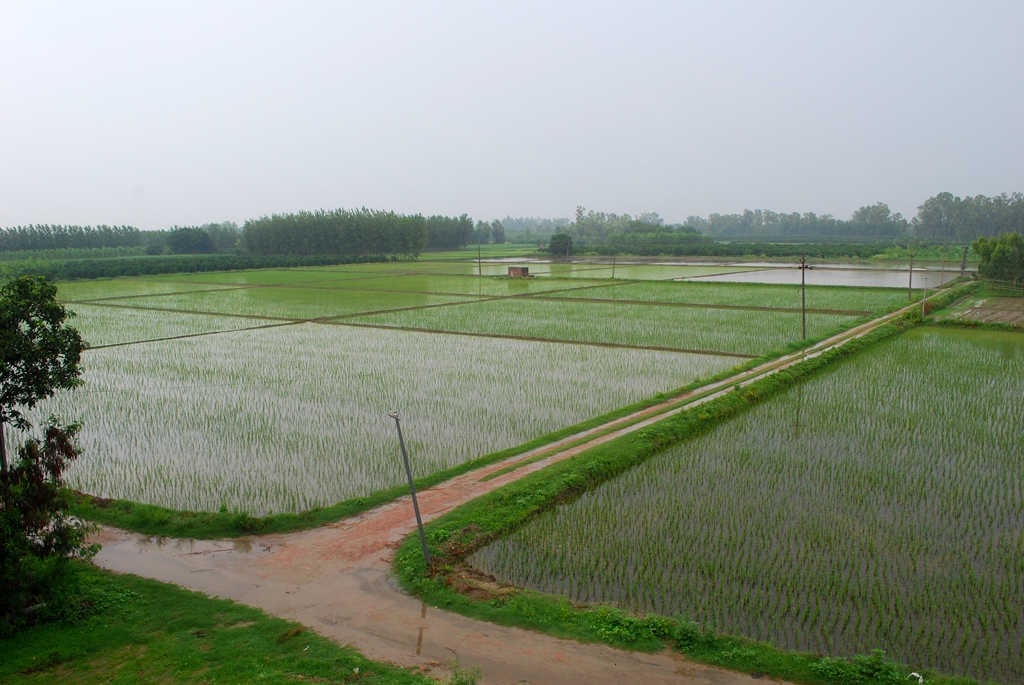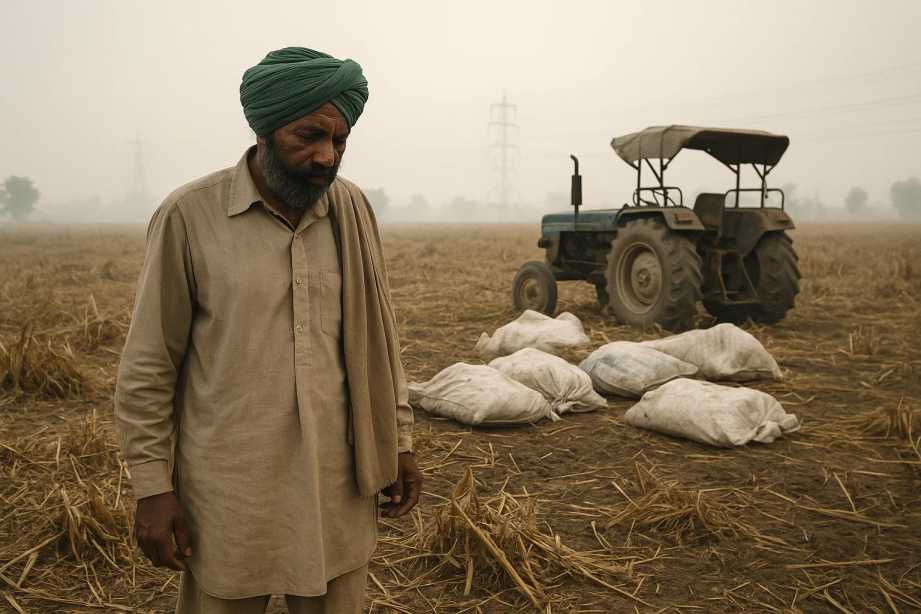The state of Punjab is often called the Breadbasket of India. It has been the key player in ensuring food security across the nation. Agriculture contributes to about 27% in the Gross State Domestic Product. It also employs 40% of the total population of Punjab. However, this predominantly agrarian economy comes with a cost. The natural resources of Punjab have been paying that price for years now.
The Green Revolution and its Aftermath
The Green revolution of 1960, transformed Punjab into agri-giant. It aimed at the adoption of high yield varieties. It also introduced chemical fertilizers, irrigation and mechanization.

Punjab currently produces 20% and 9% of India's wheat and rice respectively. Green revolution initiated by Norman Borlaug in 1970. It completely transformed the agricultural practice of India. It turned India from being a begging bowl to a breadbasket. However, the outlook now is no longer as optimistic as it was in the past.
The State of Punjab has one of the highest cropping intensity. however its agricultural sector is passing through a critical phase. The natural resources are depleting, yields stagnating and incomes falling. Punjab is a monoculture state. The prevailing cropping pattern is dominated by wheat and paddy. They are highly input-intensive and lacks diversity. This threatens the long-term sustainability of agriculture in the region.
The crop diversification policies in Punjab need to be more practical and pragmatic. It should provide alternative sets of crops to farmers. These crops should be able to economically compete with wheat and rice. The environmental sustainability of Punjab’s agricultural patterns can be questioned.
The condition of the soil has become a matter of concern. This is due to the indiscriminate use of chemical fertilizers and pesticides.
The depletion of groundwater is an alarming concern in relation to sustainability. This is a problem in the Central Zone of Punjab (rice belt covering 50% of Punjab land area). It is likely Punjab might end up losing much of its groundwater resources. Policies like free electricity to farm sector particularly for rice cultivation are problematic.
The Turn Towards Sustainability

These challenges have not gone unnoticed. A growing number of stakeholders have started embracing sustainable agriculture. Sustainability in agriculture is intended to protect the environment. It aims to expand the Earth’s natural resource base, and maintain and improve soil fertility. It encompasses a wide range of conventional and organic methods of farming.
It is achieved through management strategies. This includes selecting good quality seeds/planting material and pest management programs. It also focuses soil conserving practices and soil fertility programs. The goal of sustainable agriculture is to minimize adverse impacts on the environment. while providing a sustained level of production and profit.
The Punjab government has introduced incentives for farmers to switch to less water based crops. This includes crops like maize, pulses and vegetables. It will be done under its Crop Diversification Programme(CDP). This is supported by the Ministry of Agriculture and Farmers Welfare.
The foundation of the proposed policy is the suggestion to prohibit long-duration paddy varieties in 15 designated "dark blocks." These are regions where groundwater extraction has hit critical levels. The state's excessive dependence on water-heavy crops such as paddy is no longer viable. The policy's acknowledgment of this problem is both timely and essential.
However, this shift will not be easy to implement. The Framers of Punjab for long have depended upon the paddy as it assures procurement./ It also offers them Minimum support Price(MSP). Convincing them to switch crops without providing similar assurance will be difficult. This needs to be addressed by the government.
The government has proposed compensation for farmers who switch. However, the funding allocation has not been cleared. The absence of legal enforcement mechanisms in the draft policy raises further concerns.
Suggestions such as prohibiting certain paddy varieties are expected to face pushback from influential farmer unions, particularly if farmers perceive a threat to their livelihoods. To ensure adherence to the policy's recommendations, the state must establish legal provisions.
To ensure the success of crop diversification, it is essential for the state to establish the required infrastructure and markets that can facilitate new agricultural methods. Alternative crops such as cotton, maize, and vegetables demand a distinct range of logistics, including storage, transportation, processing, and marketing. Unfortunately, the current policy seems to fall short in addressing these vital requirements.
The central government's involvement in agricultural reforms in Punjab is essential, especially when it comes to broadening the MSP framework to encompass crops other than wheat and paddy.
Nevertheless, the dependence on central backing for this policy is somewhat unclear. For years, Punjab has advocated for the MSP to be expanded to include a greater variety of crops, but in the absence of a definitive pledge from the Centre, the policy could potentially jeopardize the financial security that farmers presently have with paddy.
The Path Ahead
Punjab is currently at a pivotal juncture. The future of its agricultural sector hinges on a well-rounded strategy that harmonizes environmental sustainability with the economic stability of its farmers.
Although the draft policy provides a hopeful starting point, its eventual success will rely on the state's capacity to refine its proposals, obtain essential funding, and cultivate trust within the farming community.
Productive recommendations, ongoing conversations, and constant adjustments will be crucial as Punjab strives to create a more robust and sustainable agricultural future.













